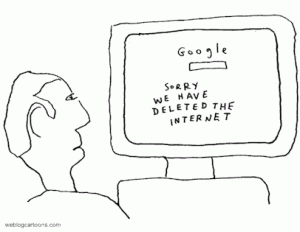Ouch that’s a longish title. OK, I admit, I am tired, could not decide between two messages and ended up combining them. Well, let’s see the messages.
The Art of Pricing

The other day I got into a tweet convo with a Startup Entrepreneur whose product I found interesting, at least at first glance. But he has a problem: the entry point for one user is $20/month – and then the price scales up. I tried to convince him to drop the entr
y price point to either free, or $1-$2 – something that allows impulse buy. He defended his pricing on a value basis. In principle he is right – but there’s the small problem that nobody knows about his product. In this case “giving away” value would become his marketing, would allow for growth, and he could scale his pricing as aggressively as he wanted. He badly needs enthusiastic users that become his marketing army.
My friend and fellow Enterprise Irregular Charlie Wood (that was my bias disclosure…) understands this…
(Cross-posted @ CloudAve » Zoli Erdos)






 Ma.gnolia
Ma.gnolia Loren Baker, Editor of Search Engine Journal discusses his experience of getting his
Loren Baker, Editor of Search Engine Journal discusses his experience of getting his ![Reblog this post [with Zemanta]](https://www.zoliblog.com/wp-content/uploads/HLIC/54e6a3db43b098ecbf5db09e027cb1c1.png)
 Quick update to my recent
Quick update to my recent  Dropbox has one advantage over Syncplicity: it’s multi-platform, including Apple’s OS X and Linux, whereas Syncplicity is Windows only for now. But that’s where it ends: it has less features (forget Web Apps integration, e.g. Google, Zoho, Scribd, Picnik), and has what I consider a huge flaw: you have to drop your files into a dedicated folder to be synchronized. That may be reasonable if you want to collaborate on a limited set of files, but it simply does not resolve the “access to all my data anywhere, anytime” problem. It’s certainly a show-stopper for me.
Dropbox has one advantage over Syncplicity: it’s multi-platform, including Apple’s OS X and Linux, whereas Syncplicity is Windows only for now. But that’s where it ends: it has less features (forget Web Apps integration, e.g. Google, Zoho, Scribd, Picnik), and has what I consider a huge flaw: you have to drop your files into a dedicated folder to be synchronized. That may be reasonable if you want to collaborate on a limited set of files, but it simply does not resolve the “access to all my data anywhere, anytime” problem. It’s certainly a show-stopper for me.
 .
. Synchronization
Synchronization Backup
Backup . On a more serious note, what I really would like to see is full Syncplicity<>Zoho integration, like it works with Google today (and since Zoho supports more Word functions, the conversion should be less lossy). And while on the wish-list, how about sync-ing to Flickr?
. On a more serious note, what I really would like to see is full Syncplicity<>Zoho integration, like it works with Google today (and since Zoho supports more Word functions, the conversion should be less lossy). And while on the wish-list, how about sync-ing to Flickr?

 The Holidays are typically the time for taking lots of family photos, so let me take this chance and remind you to keep your photos safe. For many of my readers safe increasingly means online, using photo storage/sharing services like Flickr, Zooomr, Smugmug, Picasa, and a zillion others.
The Holidays are typically the time for taking lots of family photos, so let me take this chance and remind you to keep your photos safe. For many of my readers safe increasingly means online, using photo storage/sharing services like Flickr, Zooomr, Smugmug, Picasa, and a zillion others.
Recent Comments